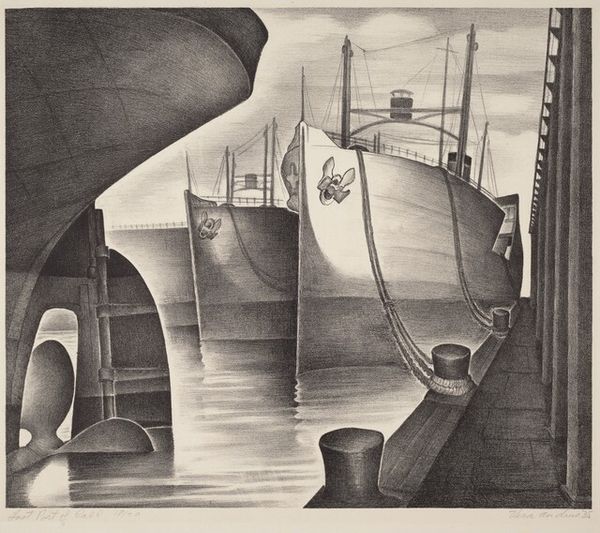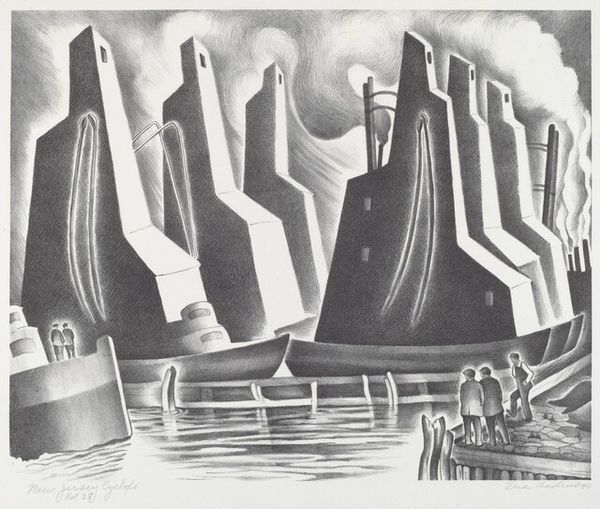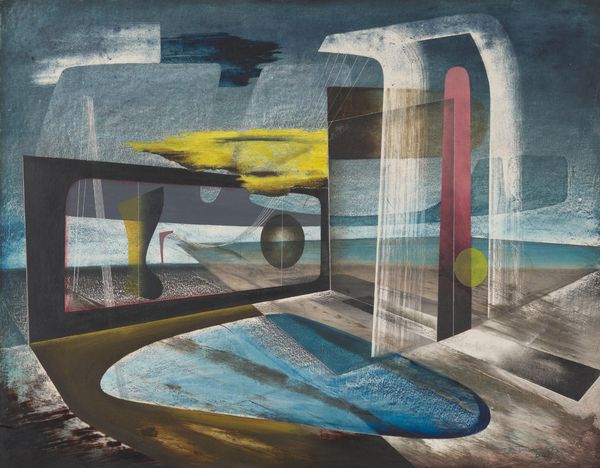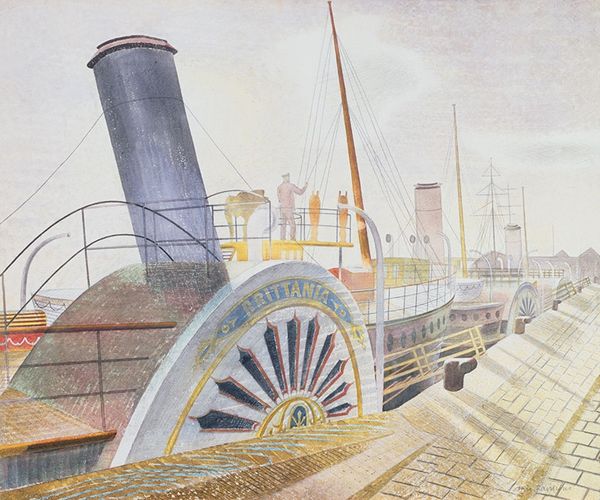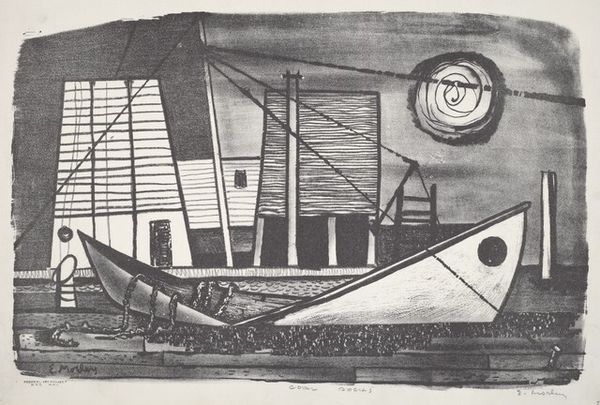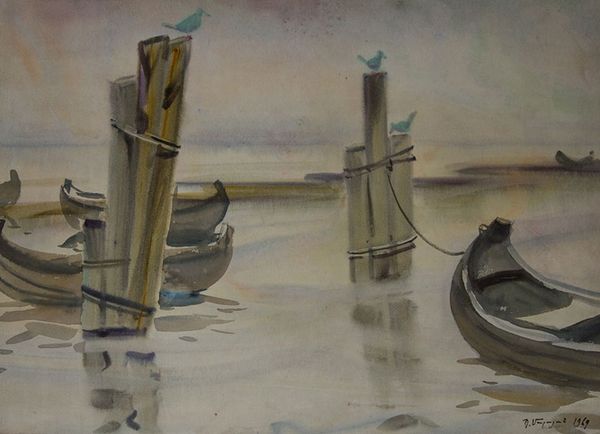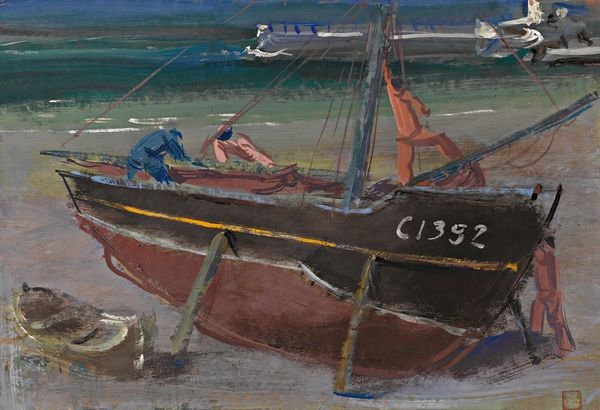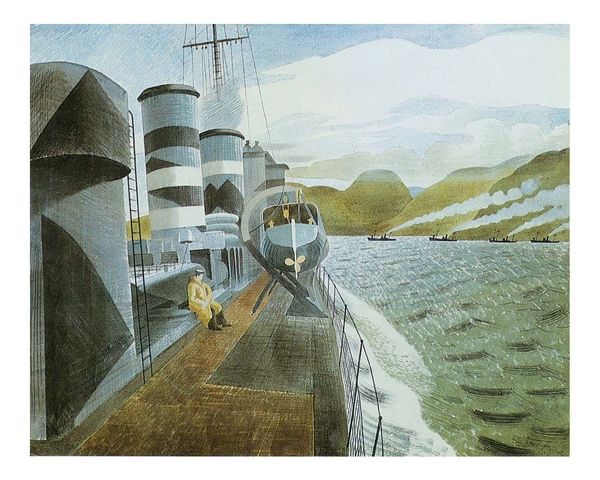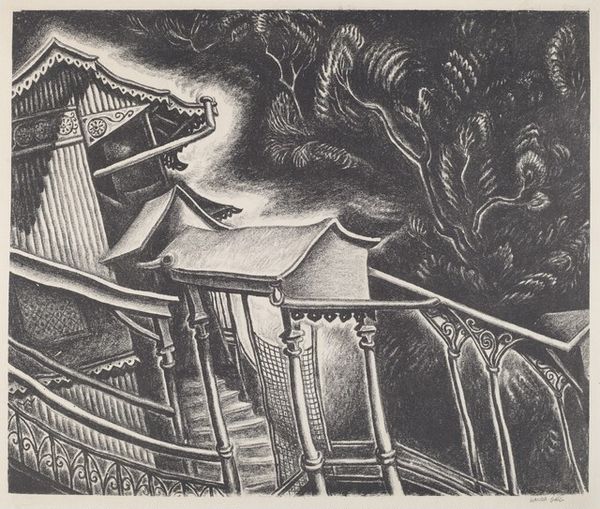
watercolor
#
landscape
#
watercolor
#
watercolor
#
realism
Copyright: Public domain
Curator: Eric Ravilious painted "Submarines in Dry Dock" in 1940, using watercolors. The work offers an unexpectedly intimate view of naval machinery during a time of national crisis. Editor: It's strikingly serene for a war image, isn’t it? Almost dreamlike in its stillness. I find the tight color palette and careful application of cross-hatching gives the submarines an almost unreal texture, a kind of haunting presence. Curator: Absolutely. He's known for his meticulous technique. But think about what he’s actually depicting: the infrastructure of war production. We have these huge machines designed for destruction, rendered delicate, static almost. The focus on materials is important; consider the labor involved in their construction. The painting draws attention to those who produce them. Editor: I am really struck by how empty it all feels, almost desolate. Look at how the staging that holds the submarines feels so precarious and the brick walls in the back that have their own haunting presences in a wartime scene that has erased any possibility of humans, but rather the product. This adds a certain melancholic tone, no? A lament for what the submarines are inevitably destined to do? Or even an acknowledgement to those affected? Curator: Perhaps, but I'm hesitant to read too much intentionality into Ravilious’s aesthetic choices. Wartime artists were given an unprecedented access to factories, which speaks more directly of how war seeps into the landscape through architecture and tools. His job was to portray a specific industrial space, and those materials inevitably possess an affect that then shape our reading and relationship to wartime industry. Editor: I understand, but that doesn’t negate the symbolic implications of empty industrial space. During war, even with many working to build war instruments, there are even more profoundly affected and made desolate. Consider where the materials are going. War represents something else to people. But also to return the focus to the work, maybe the way he captured the atmosphere with watercolour makes it hard to forget, how watercolors run with memories and emotions, makes it impactful and haunting. Curator: Well, this watercolor captures an interesting tension of being caught between a specific material presence, and that of potential emotional experience during World War II. I appreciate you bringing some humanistic interpretation to that. Editor: I think understanding that can offer some additional richness when considering that potential. I can see how material informs experience in the watercolor and hopefully, listeners can come to find ways they intersect to them, too.
Comments
No comments
Be the first to comment and join the conversation on the ultimate creative platform.
